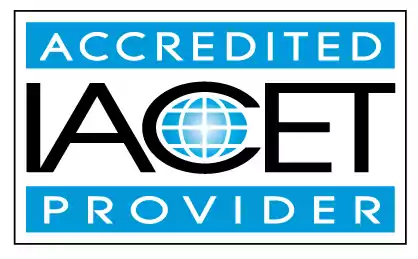Define and identify common signs and behaviors of children and youth with fragile x syndrome.
Learn how to define and identify common signs and behaviors of children and youth with fragile x syndrome and fetal alcohol syndrome. This page provides valuable information for early childhood education and child care centers.Trainings incorporating this outcome
Proficiency Level
Price
States
Alabama (1) Alaska (1) Alberta (1) Arizona (1) Australia (1) California (1) Colorado (1) Connecticut (1) Delaware (1) District of Columbia (1) Florida (1) Georgia (1) Hawaii (1) Idaho (1) Indiana (1) Iowa (1) Jamaica (1) Kansas (1) Louisiana (1) Maine (1) Manitoba (1) Maryland (1) Massachusetts (1) Michigan (1) Minnesota (1) Mississippi (1) Montana (1) Nebraska (1) New Hampshire (1) New Mexico (1) New York (1) Newfoundland and Labrador (1) North Dakota (1) Nova Scotia (1) Ohio (1) Oklahoma (1) Oregon (1) Pennsylvania (1) Prince Edward Island (1) Puerto Rico (1) Quebec (1) Rhode Island (1) Saskatchewan (1) South Dakota (1) Texas (1) Thailand (1) United Kingdom (1) Utah (1) Vermont (1) Virgin Islands (1) Virginia (1) Washington (1) West Virginia (1) Wisconsin (1)
2 hours courses
Related Outcomes
- Define and identify common signs and behaviors of children and youth with fetal alcohol syndrome.
- Define and identify common signs and behaviors of children and youth with hemophilia.
- Define and identify common signs and behaviors of children and youth with Autism Spectrum Disorder.
- Define and identify common signs and behaviors of children and youth with cerebral palsy.
- Define and identify common signs and behaviors of children and youth with depression.
- Define and identify common signs and behaviors of children and youth with developmental disabilities.
- Define and identify common signs and behaviors of children and youth with anxiety.
- Define and identify common signs and behaviors of children and youth with ADHD.
- Define and identify common signs and behaviors of children and youth with conduct disorder.
- Define and identify common signs and behaviors of children and youth with hearing loss.
- Identify appropriate practices for identify and demonstrate an children: Identify examples of appropriate activities for different ages
- Identify appropriate practices for identify and demonstrate an children: Identify importance of individual planning
- Identify appropriate practices for identify and demonstrate an children: Define Developmentally Appropriate Practice
- Give examples of ways to apply and model ethical behavior and professional integrity with all children and youth.
- Describe strategies and experiences to promote collaboration between child and youth care professionals and programs and other professionals involved in the care and education of all children and youth.
- Recognize the importance of responding to all children and youth behavior in a consistent, predictable manner.
- Identify signs of Physical Abuse in children
- Define resilience and identify ways it helps young children overcome toxic stressors.
- Identify the signs of traumatic brain injury in infants and young children.
- Identify the signs of illness in children and describe when a child should be excluded from care
Related Articles
- Understanding Why Toddlers Bite
- UNITED STATES OF AMERICA - New Mexico
- UNITED STATES OF AMERICA - Rhode Island
- Annual Training in Texas
- Curbing Bullying in Childcare
- Child care education
- Child Care Professionals
- Shining a Light on Autism Awareness Month
- Understanding Oppositional Defiant Disorder (ODD) in the Context of Child Care Providers
- Early Intervention Strategies and Services
- Elf on the Shelf or Stress on the Shelf? Recognizing Holiday Anxiety in Kids
- Trauma-Informed Care: Because Every Tiny Human Deserves a Safe Place to Land
- Basic Health and Safety: The Must-Know Training for Childcare Professionals
- What They Don’t Tell You About Child Abuse and Neglect Training (But Should)
- 🧩 Early Signs of Autism in Toddlers — What to Watch For 👀
- 🌟 How Can You Protect Children’s Health and Happiness in Every Learning Environment?
- ❤️ How Do Educators Help Families Access the Services They Need?
- 🍼📋 What Do You Need to Work in Childcare in Texas?
- 🚀How Can New Staff Quickly Get Oriented to North Dakota’s Childcare Standards?
 0.2 CEUs
0.2 CEUs